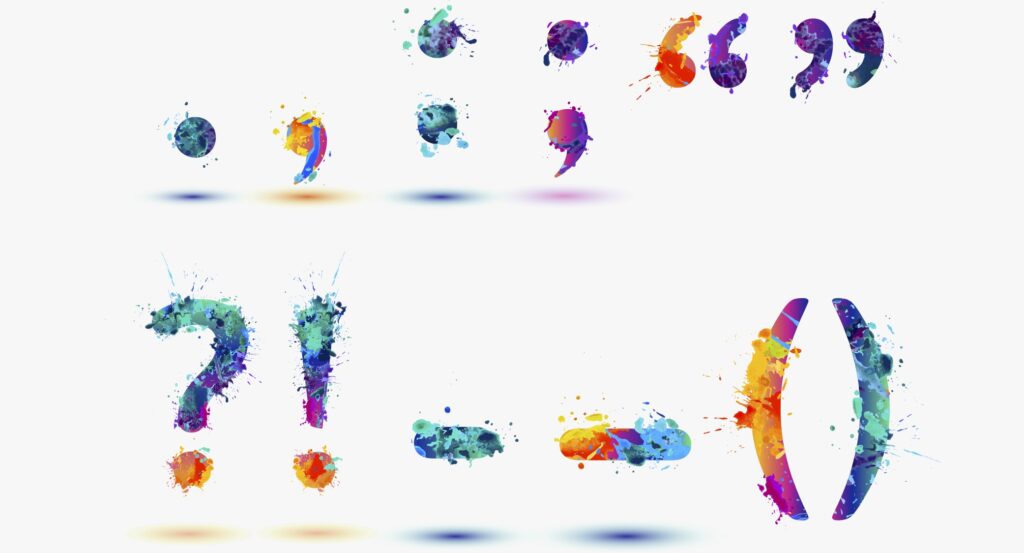The em dash can be a great tool to speed pace and create realistic dialogue. Dash placement matters when formatting dialogue that contains sudden breaks. What causes these breaks?
- The character who is speaking cuts his own dialogue short.
- One character interrupts another’s dialogue.
- The narrator breaks up dialogue.

Why It Matters
As with other special characters, overuse of the em dash decreases its effectiveness. However, that doesn’t change the fact that sometimes dialogue reads better with them, depending on context.
Below is dialogue between two characters in my novel The Breakheart Militia. Notice where I place the dashes and quotation marks. Also consider how each em dash, including its placement, affects the read. I’ll keep the setup brief so you can take note of how the dashes tell you more than the dialogue itself.
The setup: Devin finds a piece of burnt debris from a helicopter explosion she and Wade witnessed three weeks before. The two teenagers have been going back and forth with dialogue, so I stopped tagging it. Devin speaks first, then Wade, who’s also the narrator:
“It’s so weird touching this, isn’t it? We actually witnessed—”
“I know—forget about it.” I tread deeper in, to a remnant of a path calling my name. It’s bedraggled but passable.
Discussion: The dashes help the reader understand that Wade cut off Devin. He doesn’t want to discuss the topic. Therefore, Wade doesn’t need to narrate this. (Wade isn’t being rude. He has a good reason to not want to discuss the subject.) As you can see, the second dash has no relationship with the quotation marks. With that said, its presence tells us Wade is trying to blow off a topic that disturbs him.
Using Chicago Manual of Style (17th ed.) as a Guide
Section 6.87 of CMS covers the following dashes-in-dialogue situations.
Character who is speaking breaks up own dialogue
Example: As seen above with “I know—forget about it,” a character’s dialogue can break up mid sentence.
Discussion: Here, the dash doesn’t affect the quote. The dash simply shows that Wade wants to get this part of the conversation over with. He wants her to forget about the incident because the thought of it troubles him. I’ve seen authors write dialogue using comma splices instead of dashes. To me, that’s less effective, not to mention comma splices are grammatical errors. A period after “I know” would also work. However, visually, the dash depicts movement, and that complements this particular scene, in which I want a quick pace.
One character interrupts another
When this happens, the dash stays within the quote:
Example One:
“We actually witnessed—”
“I know …”
Discussion: As I mention in the preceding section, the conversation has already been set up. My readers will know who is speaking. The conversation flows with the help of short sentences and thoughtfully placed punctuation and dialogue tags (or a lack thereof).
Example Two:
“We actually witnessed—” Devin began, but Wade cut her off.
Discussion: I find this way of formatting the interruption less preferable. Note how the narration tells the reader something. It doesn’t show an action. We’re left wondering how Wade cut off Devin. If he speaks next, then it’s obvious he cut her off, so why bother saying “but Wade cut her off”? If Wade did something to cut her off, like cover her mouth (which would be pretty rude), then that should be said rather than telling about his cutting her off.
Other problems:
If we know who’s speaking because other dialogue precedes this example, then “Devin began, and Wade cut her off” is redundant. Such a descriptive tag is unnecessary.
If we don’t know who’s speaking already, then the tag is fine. However, as you can see, the narration slows the pace of reading. In my particular story, this would take away from a fairly intense moment. Again, your choice depends on the situation characters are in and how you choose to pace the dialogue. Keep in mind that dialogue pacing should reflect the pace of action. Unless, of course, you want to depict a character who remains sluggish despite being involved with fast-paced action or vice versa.
Note regarding smart quotes: When a smart quote immediately follows a dash, my experience has been I have to type the smart quotation mark first, then squeeze in the dash between the last word and the quote. Otherwise, the smart quote turns in the wrong direction. (There may be a way to troubleshoot this. I just haven’t figured it out yet.)
Narrator breaks up dialogue
In this case, CMS says the dashes flank the interrupting text, outside the quotes.
Example: In another scene in my novel, Devin speaks with another character. They discuss the condition of little reptile in a glass tank (symbolism—you gotta love it):
“We should free him,” Devin says.
“He’s very well taken care of. Out there”—Brooke gestures to the window—“a coyote or hawk might eat him.”
Discussion: Note the location of the dashes in relation to Brooke’s action. Visually this works well. It delineates her action as she speaks, while complementing her dialogue. The reader can see her movements as she speaks. Thus, the dialogue seems natural.
If Brooke delayed her speaking because something held her words back–for instance, she was distracted by something or had trouble finding the right words–the situation might call for an ellipsis. But that’s for another discussion. And again, context and pacing factor into the decision-making
In Conclusion . . .
Section 6.87 in CMS explains how to deal with em dashes used for sudden interruptions. The section includes a discussion of scenarios that include breaks in dialogue. These breaks can occur inside or outside of quotation marks. Proper placement of the em dash and quotation mark matters, not just for the sake of stylistic consistency. Punctuation guides the reader, helps pacing, and enables you to create realistic dialogue.
